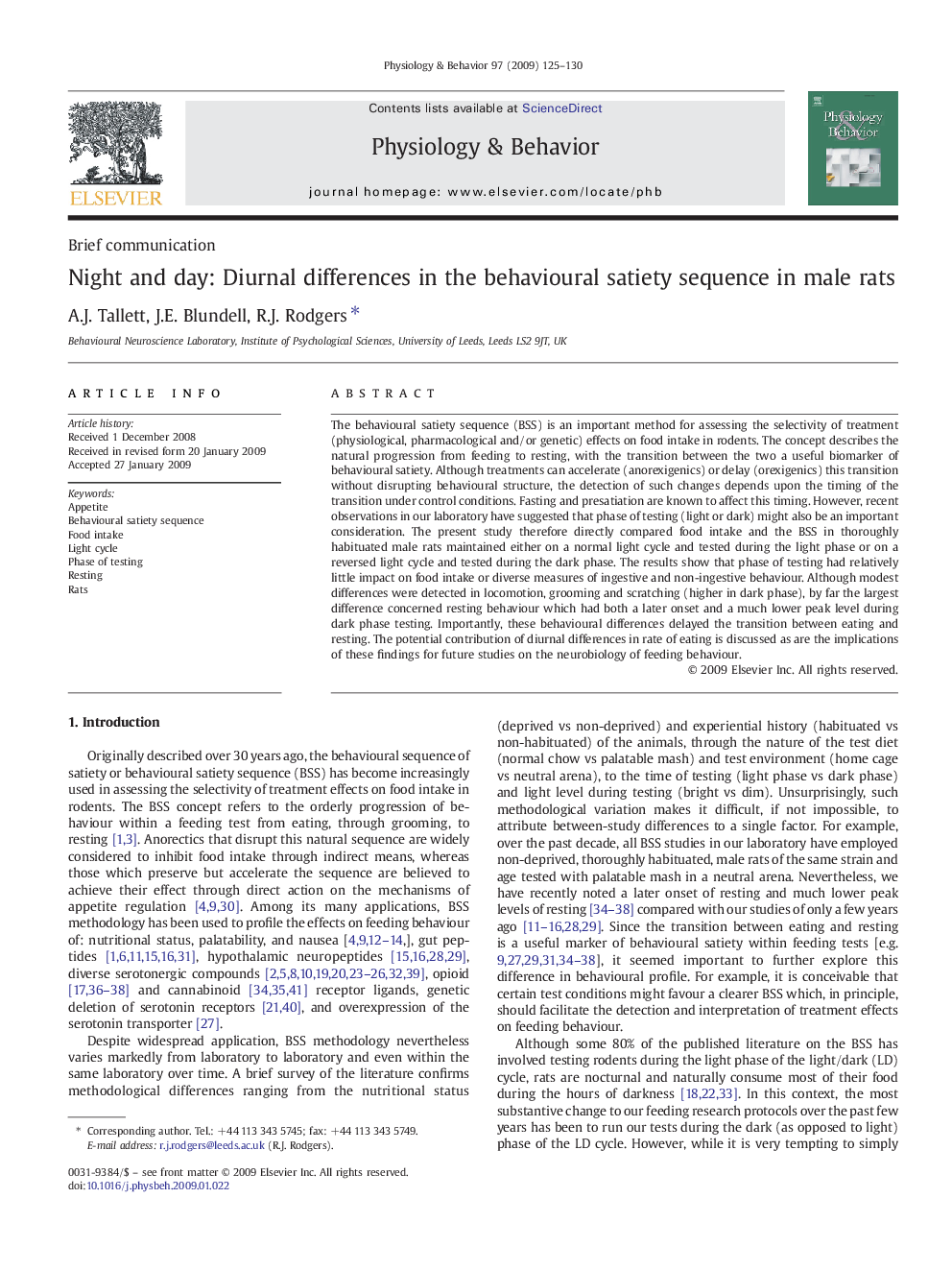| Article ID | Journal | Published Year | Pages | File Type |
|---|---|---|---|---|
| 2845091 | Physiology & Behavior | 2009 | 6 Pages |
The behavioural satiety sequence (BSS) is an important method for assessing the selectivity of treatment (physiological, pharmacological and/or genetic) effects on food intake in rodents. The concept describes the natural progression from feeding to resting, with the transition between the two a useful biomarker of behavioural satiety. Although treatments can accelerate (anorexigenics) or delay (orexigenics) this transition without disrupting behavioural structure, the detection of such changes depends upon the timing of the transition under control conditions. Fasting and presatiation are known to affect this timing. However, recent observations in our laboratory have suggested that phase of testing (light or dark) might also be an important consideration. The present study therefore directly compared food intake and the BSS in thoroughly habituated male rats maintained either on a normal light cycle and tested during the light phase or on a reversed light cycle and tested during the dark phase. The results show that phase of testing had relatively little impact on food intake or diverse measures of ingestive and non-ingestive behaviour. Although modest differences were detected in locomotion, grooming and scratching (higher in dark phase), by far the largest difference concerned resting behaviour which had both a later onset and a much lower peak level during dark phase testing. Importantly, these behavioural differences delayed the transition between eating and resting. The potential contribution of diurnal differences in rate of eating is discussed as are the implications of these findings for future studies on the neurobiology of feeding behaviour.
